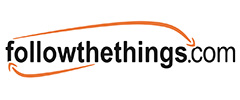

followthethings.com
Security
“Step Away From The Weapon“
Undergraduate coursework written by Ginny Childs, originally published on followtheblog.org here.
Full text below.
In the version of the ‘Geographies of Material Culture’ module that was first taught at the University of Exeter, groups of students were given books, music videos, films and other example of trade justice activism to research. Their job was to produce draft pages on these sources for the followthethings.com website. Ginny Childs was in a group researching Indian rap artist Sofia Ahraf’s ‘Dow vs Bhopal: A Toxic Rap Battle’ music video [see this page in our website here]. Ginny wasn’t born when the Bhopal factory exploded in 1984 but, as a member of the university’s Office Training Corps, she notices stringent rules about toxic chemical leaks in her rifle drills. While thousands of people of Bhopal had been poisoned by Methyl Isocyanate, she was at risk from a tiny dose of the radioactive hydrogen isotope called tritium that was in her rifle battlesight. The safety procedures in place if that leaked its tritium are stringent. So she investigates the safety procedures the Union Carbide factory in Bhopal in the 1980s and wonders if she’s benefitted from better chemical safety regs that emerged after the disaster. Dow still hasn’t paid compensation top the Bhopal victims. And she’s still reliant on Dow (who bought Union Carbide) as a company making chemical ingredients in the commoditiies she loves. So what can she do with what she learns? How can she make a difference? Share Ashraf’s ”toxic rap battle’ video on her socials maybe? Keep the story alive.
Page reference: Ginny Childs (2017) Step Away From The Weapon. followthethings.com/step-away-from-the-weapon.shtml (last accessed <insert date here>)
Estimated reading time: 9 minutes.
Continue reading Step Away From The Weapon


